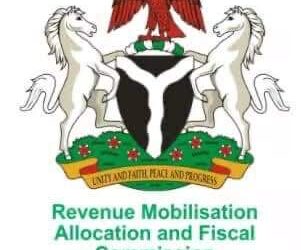Global growth has slowed sharply and the risk of financial stress in emerging markets and developing economies (EMDEs) is intensifying amid elevated global interest rates, the World Bank has said.
In its latest Global Economic Prospects report, the Washington based lender projected global growth to decelerate from 3.1 per cent in 2022 to 2.1 per cent in 2023.
In EMDEs other than China, growth is set to slow to 2.9 per cent this year from 4.1 per cent last year. These forecasts reflect broad-based downgrades: growth projections for 70 percent of EMDEs and nearly all advanced economies have been downgraded.
World Bank Group President Ajay Banga noted that “The surest way to reduce poverty and spread prosperity is through employment—and slower growth makes job creation a lot harder. It’s important to keep in mind that growth forecasts are not destiny. We have an opportunity to turn the tide but it will take us all working together.”
Most EMDEs have seen only limited harm from the recent banking stress in advanced economies so far, but they are now sailing in dangerous waters. With increasingly restrictive global credit conditions, one out of every four EMDEs has effectively lost access to international bond markets. The squeeze is especially acute for EMDEs with underlying vulnerabilities such as low creditworthiness. Growth projections for these economies for 2023 are less than half those from a year ago, making them highly vulnerable to additional shocks.
“The world economy is in a precarious position,” said Indermit Gill, the World Bank Group’s Chief Economist and Senior Vice President. “Outside of East and South Asia, it is a long way from the dynamism needed to eliminate poverty, counter climate change, and replenish human capital. In 2023, trade will grow at less than a third of its pace in the years before the pandemic. In emerging markets and developing economies, debt pressures are growing due to higher interest rates. Fiscal weaknesses have already tipped many low-income countries into debt distress. Meanwhile, the financing needed to achieve the sustainable development goals are far greater than even the most optimistic projections of private investment.”
The latest forecasts indicate that the overlapping shocks of the pandemic, the Russian invasion of Ukraine, and the sharp slowdown amid tight global financial conditions have dealt an enduring setback to development in EMDEs, one that will persist for the foreseeable future. By the end of 2024, economic activity in these economies is expected to be about 5 per cent below levels projected on the eve of the pandemic. In low-income countries—especially the poorest—the damage is stark: in more than one-third of these countries, per capita incomes in 2024 will still be below 2019 levels. This feeble pace of income growth will entrench extreme poverty in many low-income countries.
“Many developing economies are struggling to cope with weak growth, persistently high inflation, and record debt levels. Yet new hazards—such as the possibility of more widespread spillovers from renewed financial stress in advanced economies—could make matters even worse for them,” said Ayhan Kose, Deputy Chief Economist of the World Bank Group. “Policy makers in these economies should act promptly to prevent financial contagion and reduce near-term domestic vulnerabilities.”
In advanced economies, growth is set to decelerate from 2.6 per cent in 2022 to 0.7 per cent this year and remain weak in 2024, the report says. After growing 1.1 per cent in 2023, the U.S. economy is set to decelerate to 0.8 per cent in 2024, mainly because of the lingering impact of the sharp rise in interest rates over the past year and a half. In the euro area, growth is forecast to slow to 0.4 per cent in 2023 from 3.5 per cent in 2022, due to the lagged effect of monetary policy tightening and energy-price increases.




